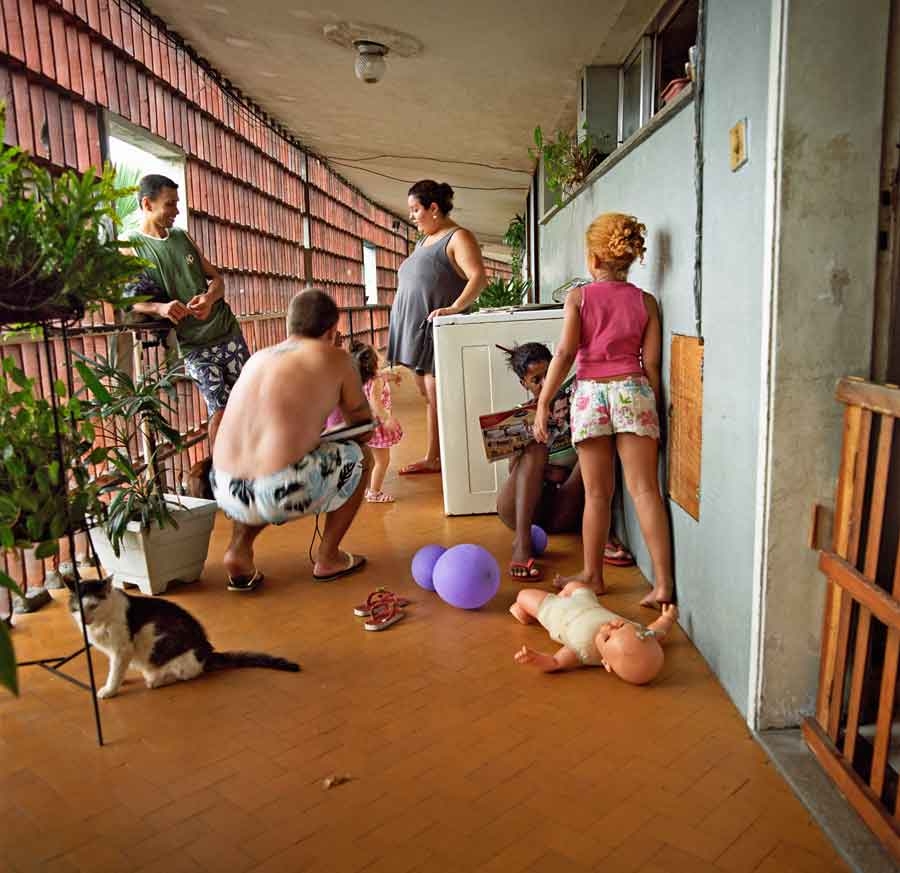Luiza Baldan works mostly through photography to investigate, in depth, man’s relationship with architecture, searching for little oddities and breaks in the sameness of everyday life. The immersion of the artist in her subject matter has reached the point where she actually lives in the places – such as Oscar Niemeyer’s iconic ‘Copan’ building in São Paulo – in which she chooses to develop her research. Her stunning images are part of a process in which work and life are mixed together in a dilated performance, which begins at home and spreads throughout the building, studio and streets of the city. The work has no specific end, itself being a recurring experience in the life of the artist, who changes address from time to time and creates written narratives of her experiences in order to produce works of this nature.
Besides Copan, Baldan has undertaken artistic residencies in other emblematic buildings, experiencing the wonders and paradoxes of living in places that are part of the collective imagination. Included among these projects are Pedregulho (Benfica, Rio de Janeiro, social habitats designed by modernist architect Affonso Eduardo Reidy), Pen.nsula (Barra da Tijuca, Rio de Janeiro, an ‘eco-neighbourhood’/ ‘neighbourhood-condominium’ constructed during the mid-2000s) and the Raposo Lopes building (Santa Teresa, Rio de Janeiro, dating from the late 1930s and containing one of the largest residential swimming pools – albeit currently deactivated – in Latin America), among others. Above all, it is the sharpness and complexity of Baldan’s photographs, associated with the urgency of the themes she deals with, such as the decay in landmark buildings in Brazil and how housing conditions directly influence the lives of the people she chooses to portray, that makes her one of the most interesting artists of her generation.
Originally published in the March 2014 FutureGreats issue, in association with EFG International
